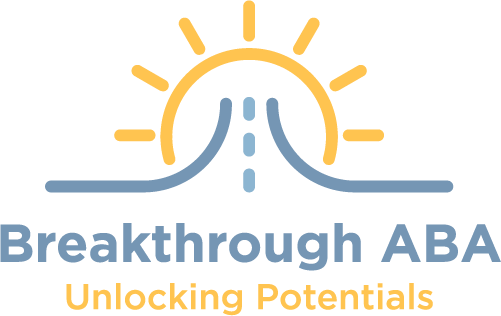Published by Breakthrough ABA
———————-
Applied Behavior Analysis (ABA) therapy is one of the most widely studied and effective treatments for individuals with autism—but it’s also one of the most misunderstood.
At Breakthrough ABA, we believe that informed families make empowered decisions. In this blog, we’re unpacking some of the most common myths about ABA therapy and giving you the facts you deserve.
❌ Myth #1: ABA Is Just About “Fixing” Bad Behavior
✅ Truth: ABA is about teaching meaningful, functional skills.
ABA therapy isn’t focused on punishment or “correcting” children—it’s about helping them gain skills that improve their independence, communication, and quality of life. These may include:
- Learning to express needs verbally or with devices
- Following directions
- Making eye contact (only if appropriate and not distressing)
- Reducing behaviors that interfere with learning
The goal is never to make a child seem more “typical”—it’s to support their unique development using evidence-based strategies.
❌ Myth #2: ABA Uses Harsh or Rigid Methods
✅ Truth: Modern ABA is flexible, compassionate, and child-centered.
Early versions of ABA from decades ago were more rigid, but today’s best practices emphasize:
- Positive reinforcement (not punishment)
- Individualized goals based on a child’s strengths and needs
- Play-based learning
- Respecting the child’s preferences and autonomy
In fact, many ABA therapy sessions look like play, because therapists often embed learning in natural, enjoyable activities.
❌ Myth #3: ABA Is Only for Young Children
✅ Truth: ABA is effective across the lifespan.
While early intervention is critical, ABA therapy benefits:
- Toddlers (e.g., teaching early communication)
- School-aged children (e.g., improving classroom behavior)
- Teens and adults (e.g., job skills, safety awareness, social skills)
❌ Myth #4: ABA Therapy Ignores Emotions
✅ Truth: ABA considers emotions, motivation, and self-regulation.
While ABA focuses on observable behavior, it doesn’t ignore internal experiences. Therapists identify the function of behaviors—whether it’s frustration, anxiety, or sensory overload—and teach healthier coping strategies.
For example:
- A child who tantrums may be taught to request a break.
- A child who stims may receive tools for self-regulation, not suppression.
❌ Myth #5: ABA Is One-Size-Fits-All
✅ Truth: ABA is highly individualized.
No two ABA programs are alike. Each child’s plan is developed by a Board Certified Behavior Analyst (BCBA) and reflects:
- The child’s current skills
- Family values and cultural context
- Learning preferences
Therapy methods, goals, reinforcers, and schedules are tailored and adjusted frequently for best results.
❌ Myth #6: ABA Is All About Rewards and Bribery
✅ Truth: ABA uses meaningful, well-planned reinforcement.
Reinforcement in ABA therapy is evidence-based. It helps children learn to associate appropriate behavior with positive outcomes, such as:
- Praise
- Access to preferred toys or activities
- Token systems
Bribery happens before behavior; reinforcement comes after to strengthen positive actions long-term.
❌ Myth #7: ABA Suppresses a Child’s Personality
✅ Truth: ABA helps children express themselves more clearly.
Good ABA doesn’t aim for conformity—it supports self-expression by:
- Teaching a child how to say “no”
- Helping them communicate preferences
- Allowing non-harmful stimming behaviors
ABA therapy should empower—not suppress—a child’s voice and autonomy.
❌ Myth #8: Parents Shouldn’t Be Involved
✅ Truth: ABA is most effective when families are engaged.
Family participation is a major success factor in ABA therapy. This includes:
- Observing sessions
- Practicing techniques at home
- Participating in caregiver training
At Breakthrough ABA, we view parents and caregivers in Greater Houston as vital team members, not bystanders.
Final Thoughts: Replace Fear with Facts
ABA therapy isn’t perfect—but when practiced with compassion, respect, and a commitment to individualized care, it can make a lasting, meaningful impact on children and their families.
Have questions about ABA or your child’s needs? We’re here to talk. At Breakthrough ABA, we believe in replacing myths with education—and building trust through transparency.
